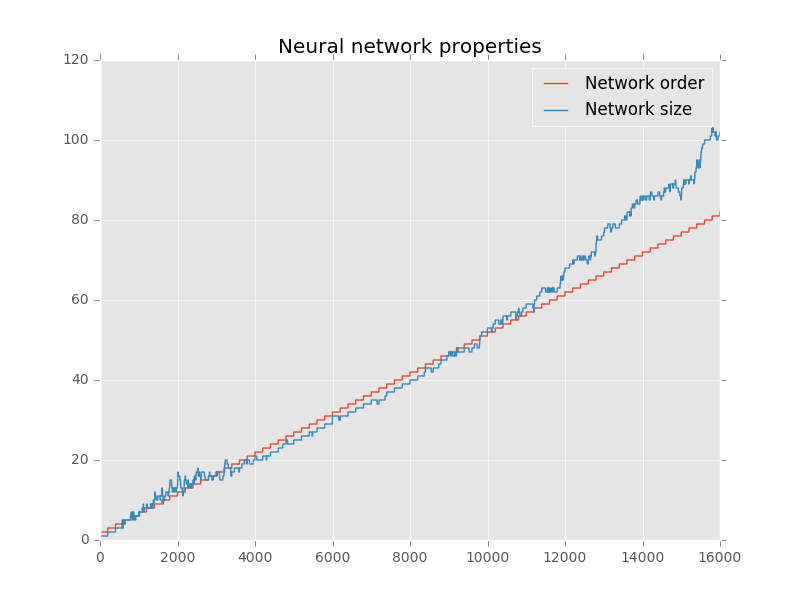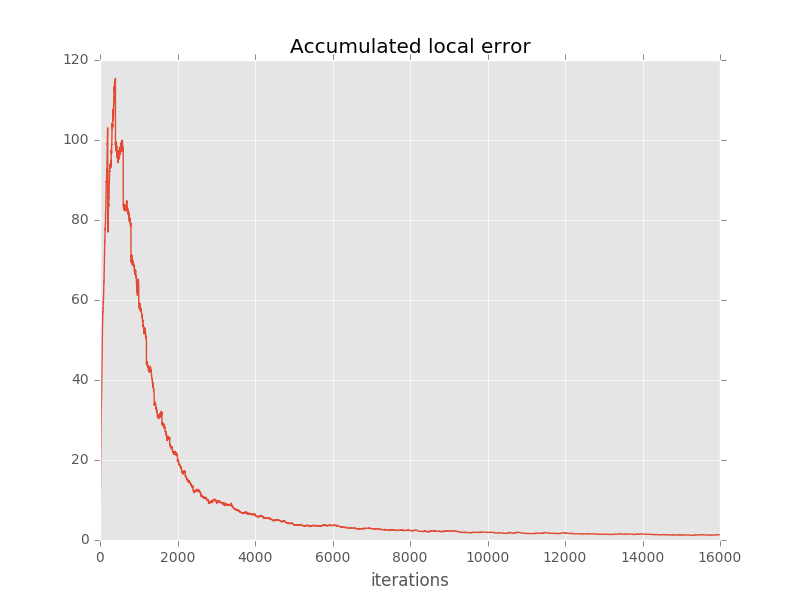A simple implementation of the Growing Neural Gas algorithm, based on:
A Growing Neural Gas Network Learns Topologies, B. Fritzke
Advances in Neural Information Processing Systems 7 (1995)`
Instantiate a GNG object with some data, then fit the neural network:
gng = GrowingNeuralGas(data)
gng.fit_network(e_b=0.1, e_n=0.006, a_max=10, l=200, a=0.5, d=0.995, passes=8, plot_evolution=True)
This example shows (i) how to generate toy data (two interleaving half circles) using the scikit-learn lib and (ii) how to perform cluster analysis through the growing neural gas network:
from gng import GrowingNeuralGas
from sklearn import datasets
from sklearn.preprocessing import StandardScaler
print('Generating data...')
data = datasets.make_moons(n_samples=2000, noise=.05)
data = StandardScaler().fit_transform(data[0])
print('Done.')
print('Fitting neural network...')
gng = GrowingNeuralGas(data)
gng.fit_network(e_b=0.1, e_n=0.006, a_max=10, l=200, a=0.5, d=0.995, passes=8, plot_evolution=True)
print('Found %d clusters.' % gng.number_of_clusters())
gng.plot_clusters(gng.cluster_data())
Running example.py will produce the following output:
Preparing data...
Done.
Fitting neural network...
Pass #1
Pass #2
Pass #3
Pass #4
Pass #5
Pass #6
Pass #7
Pass #8
Found 2 clusters.



